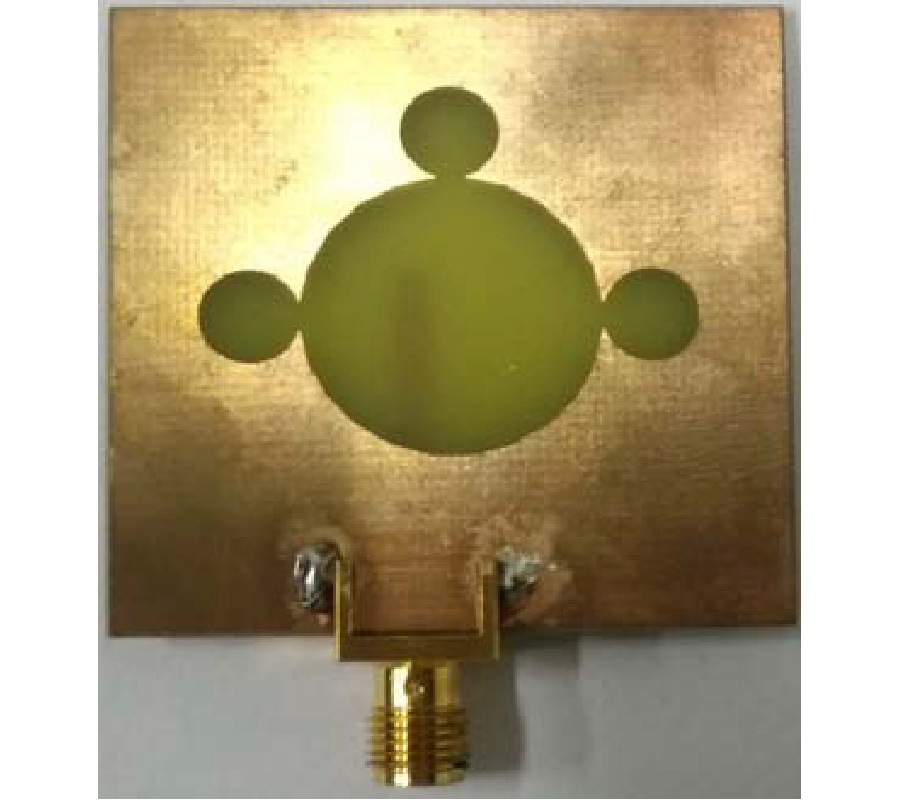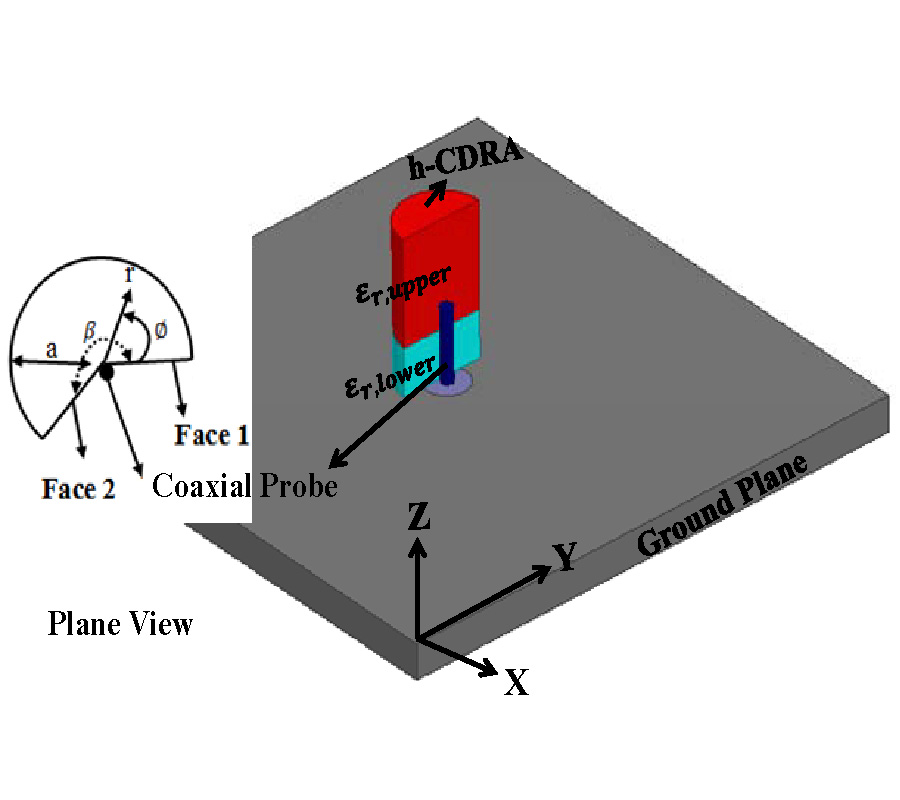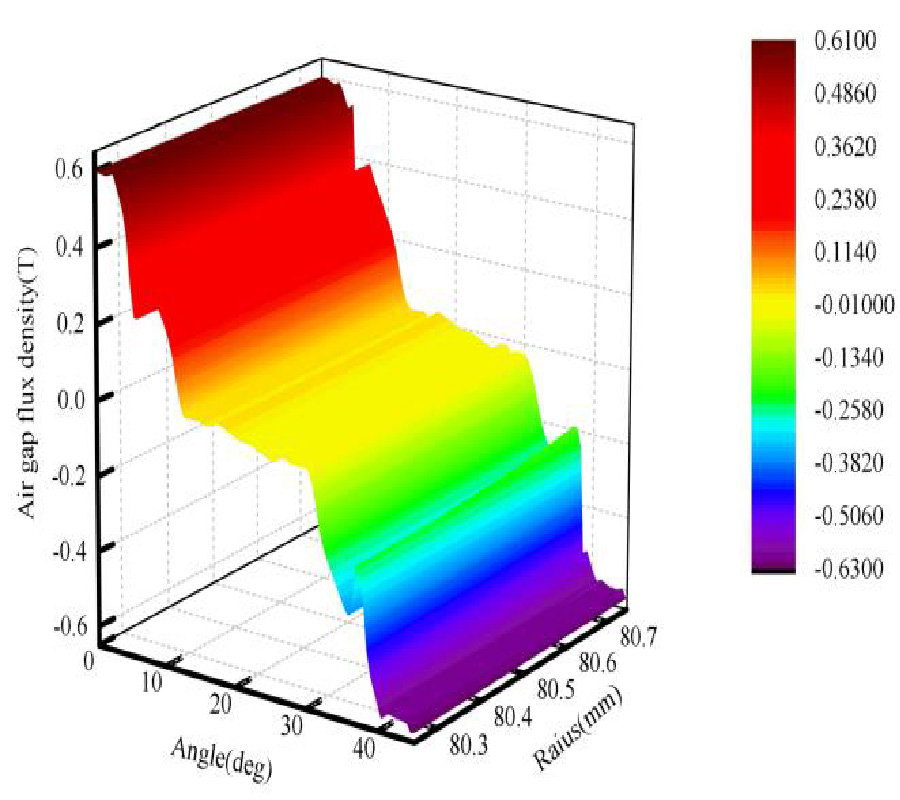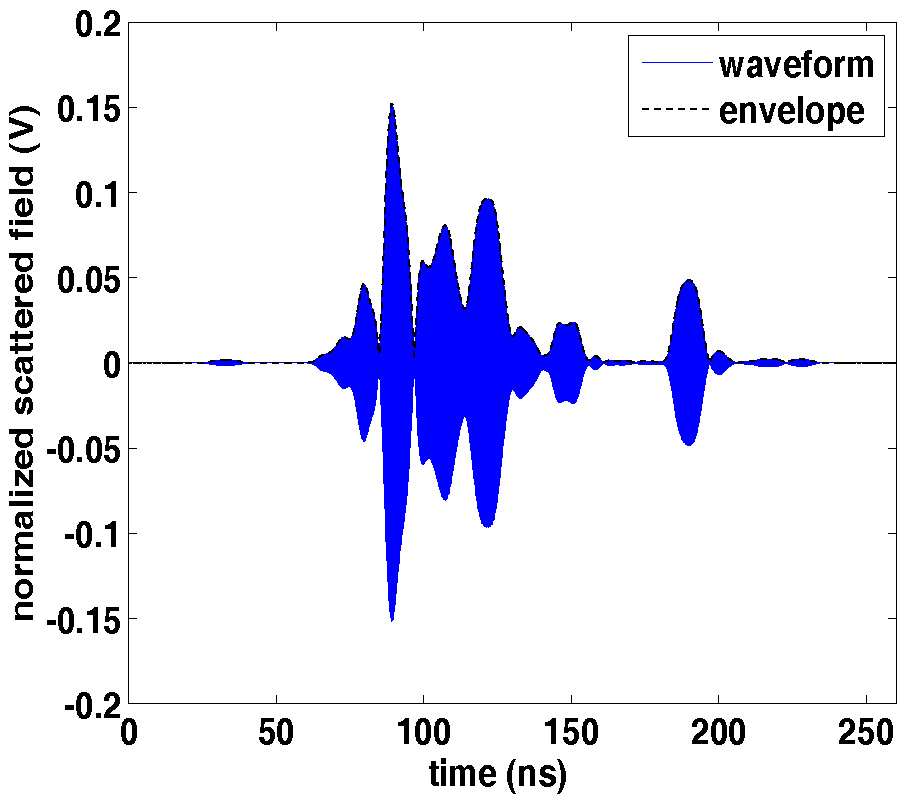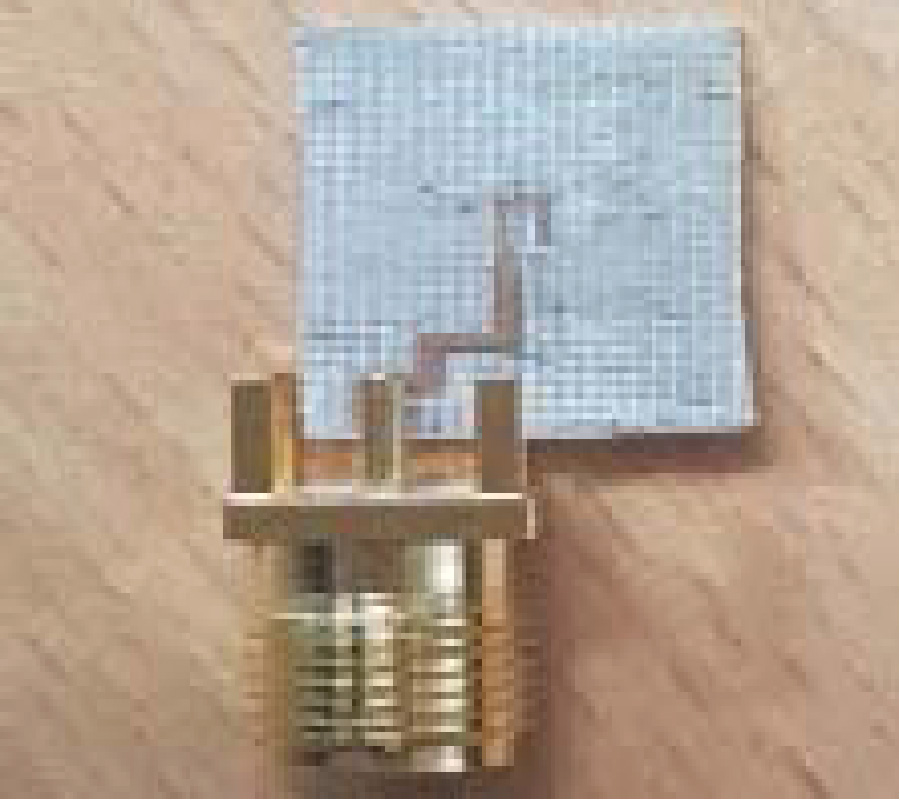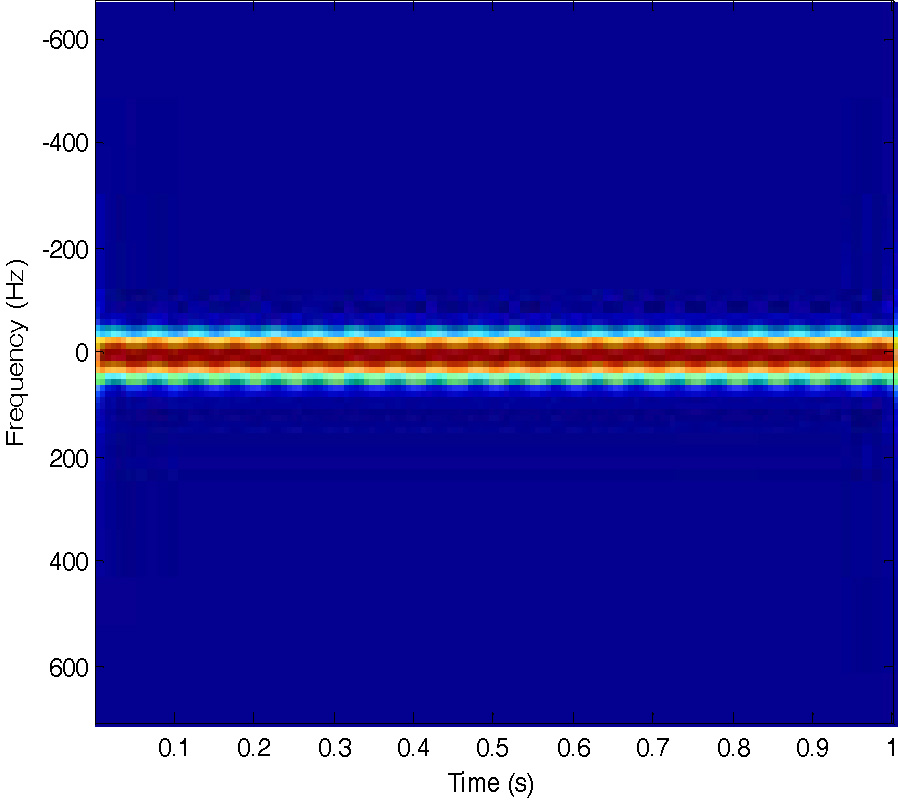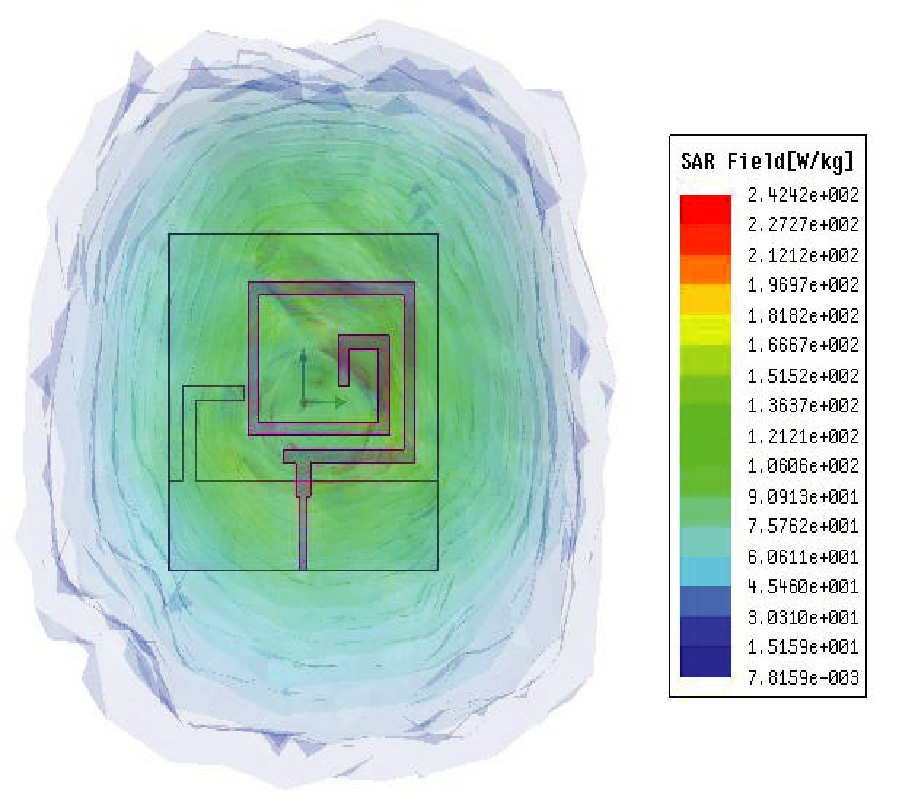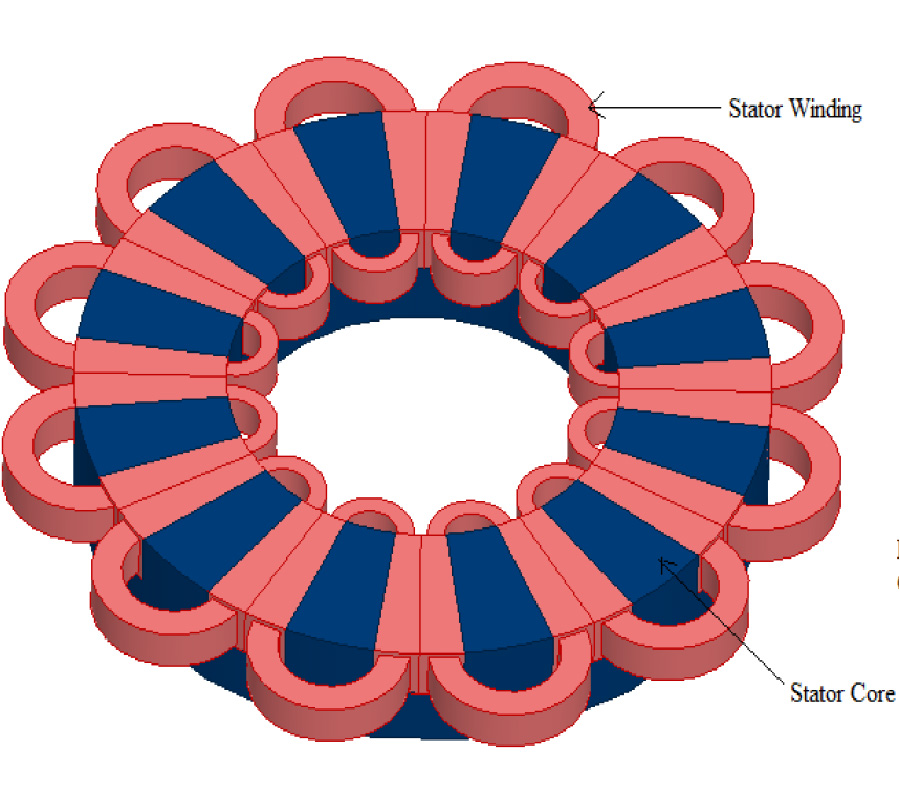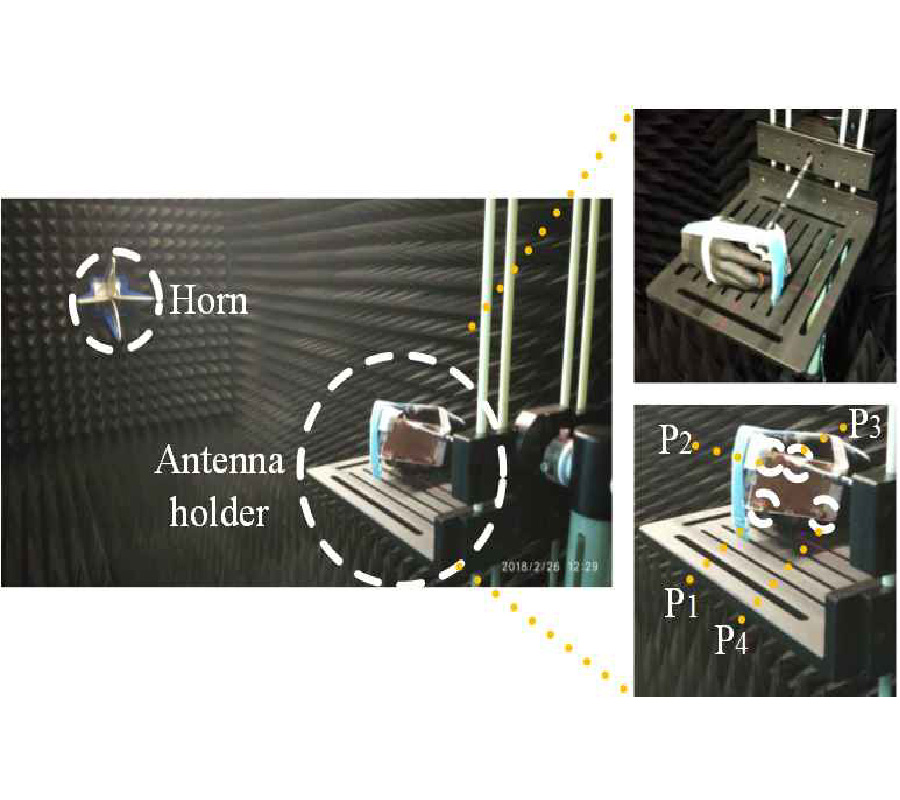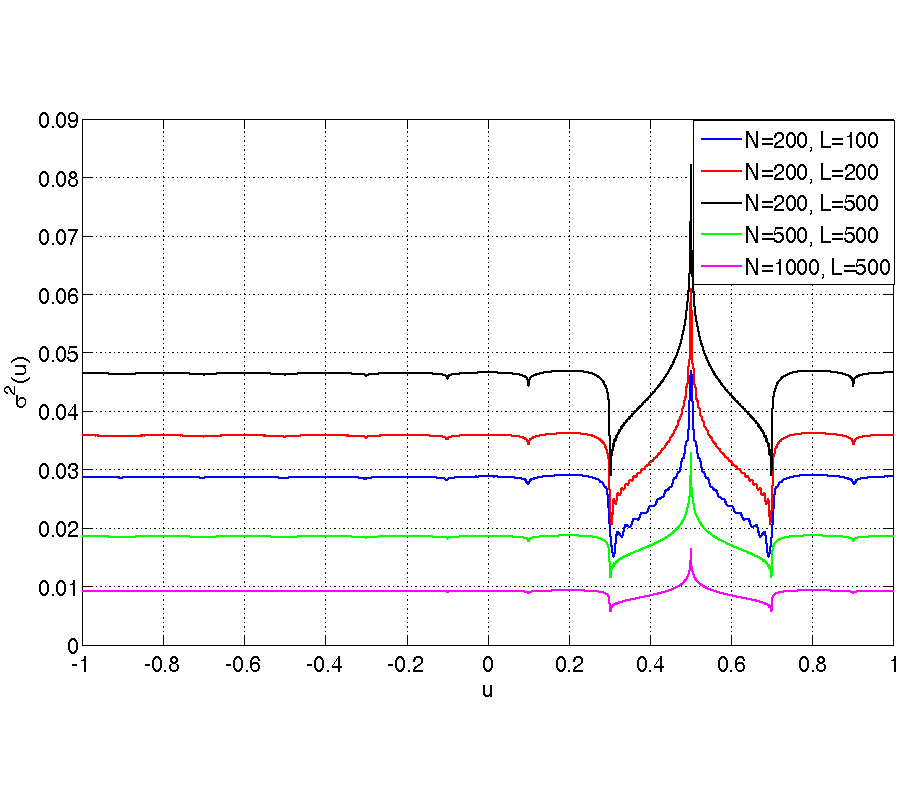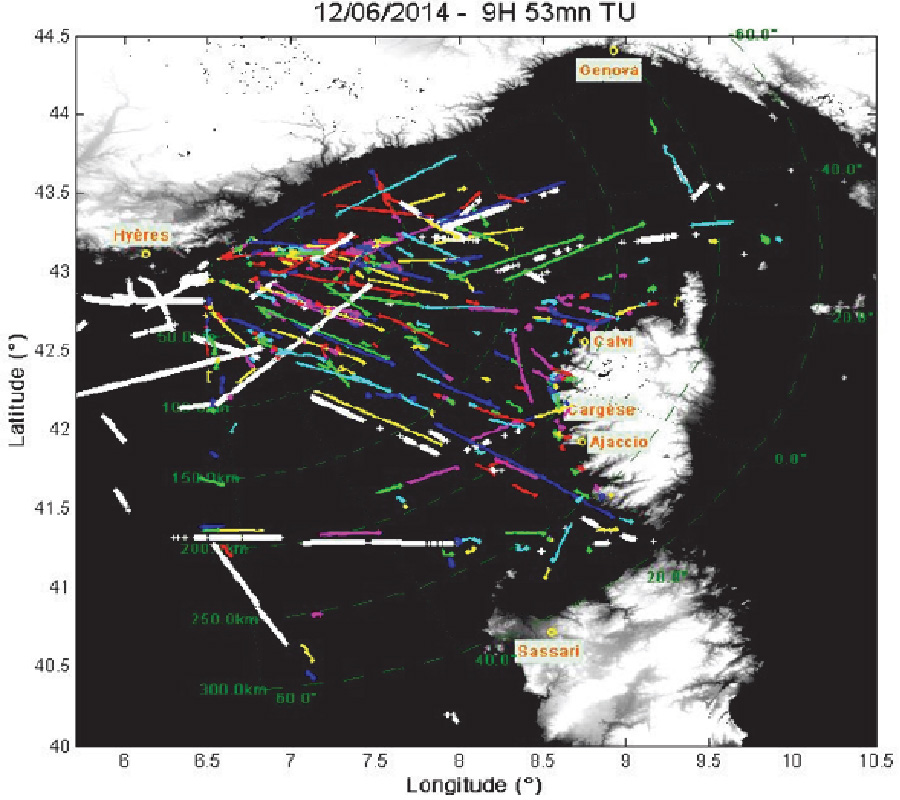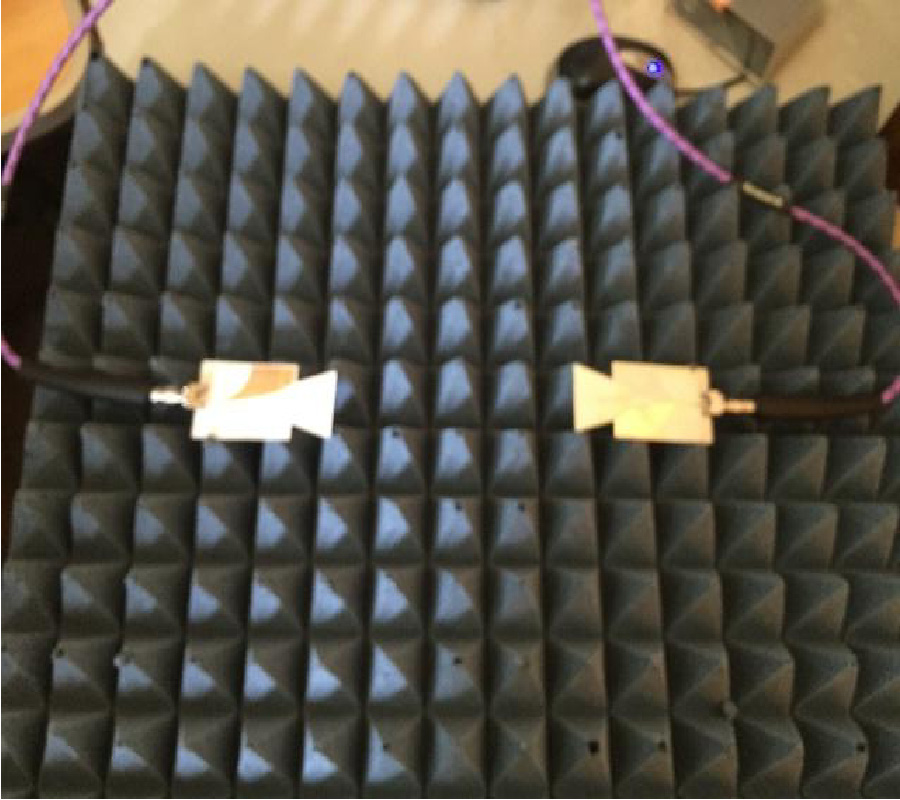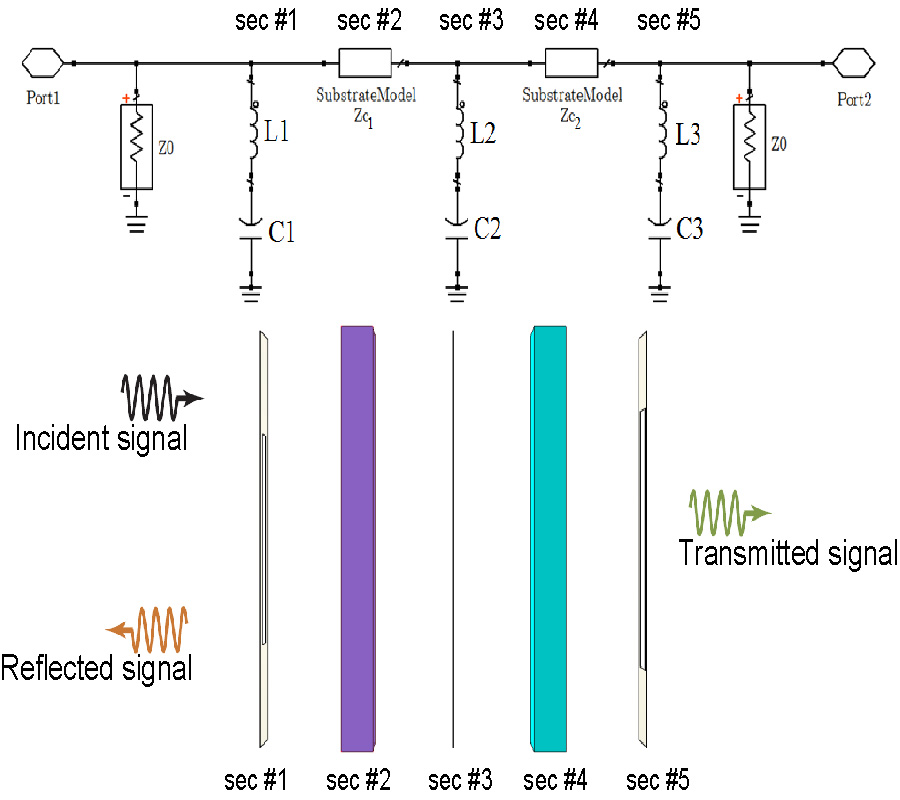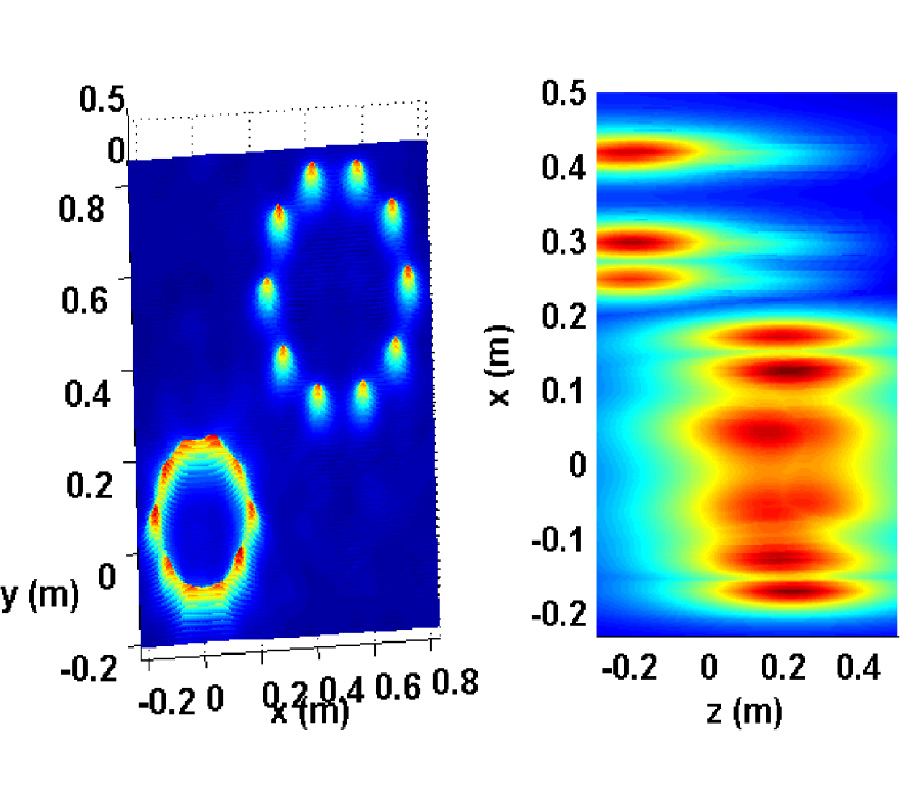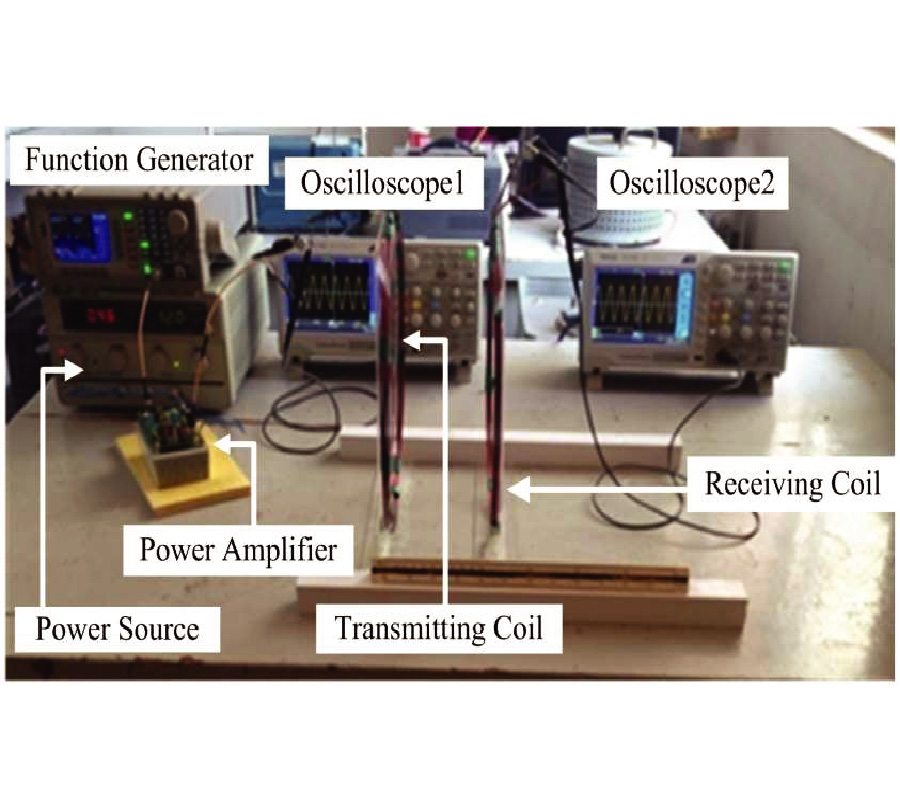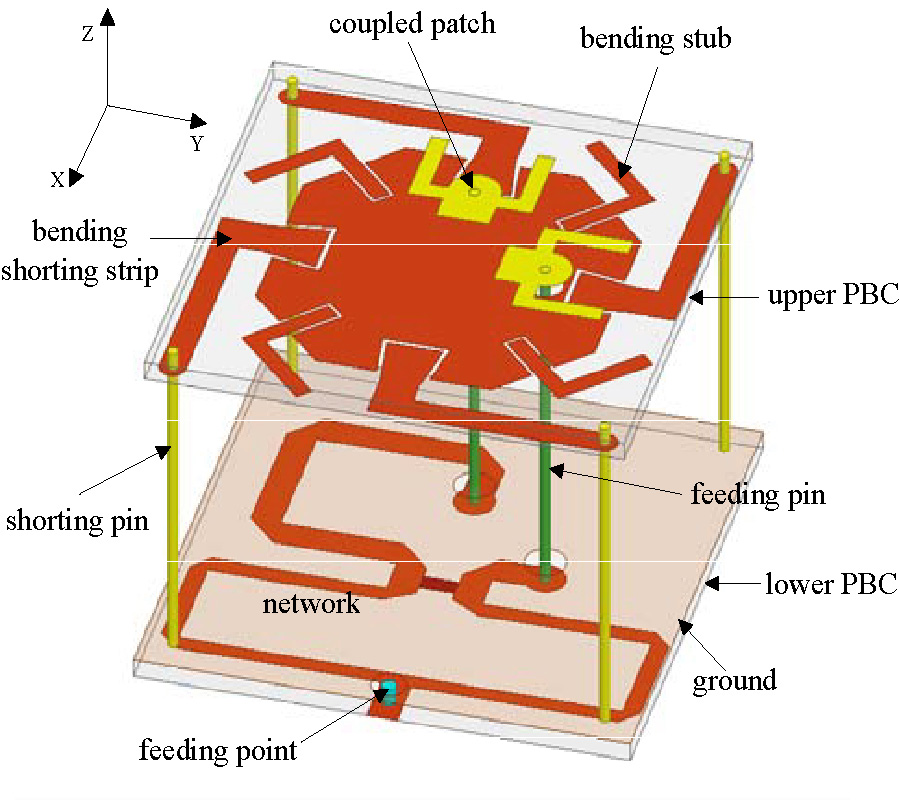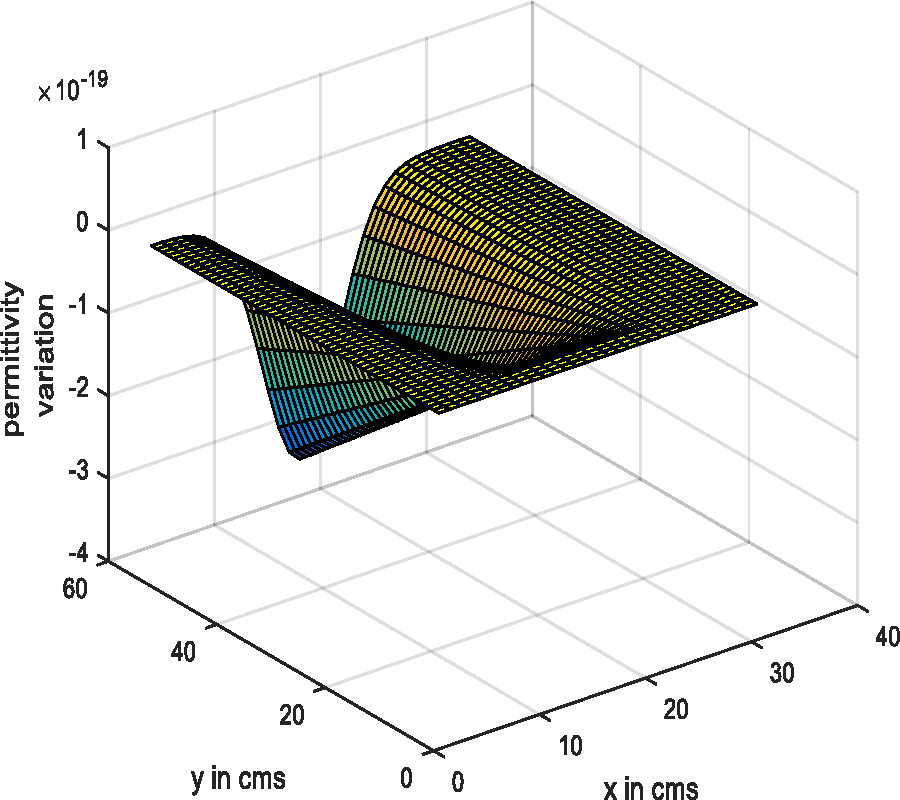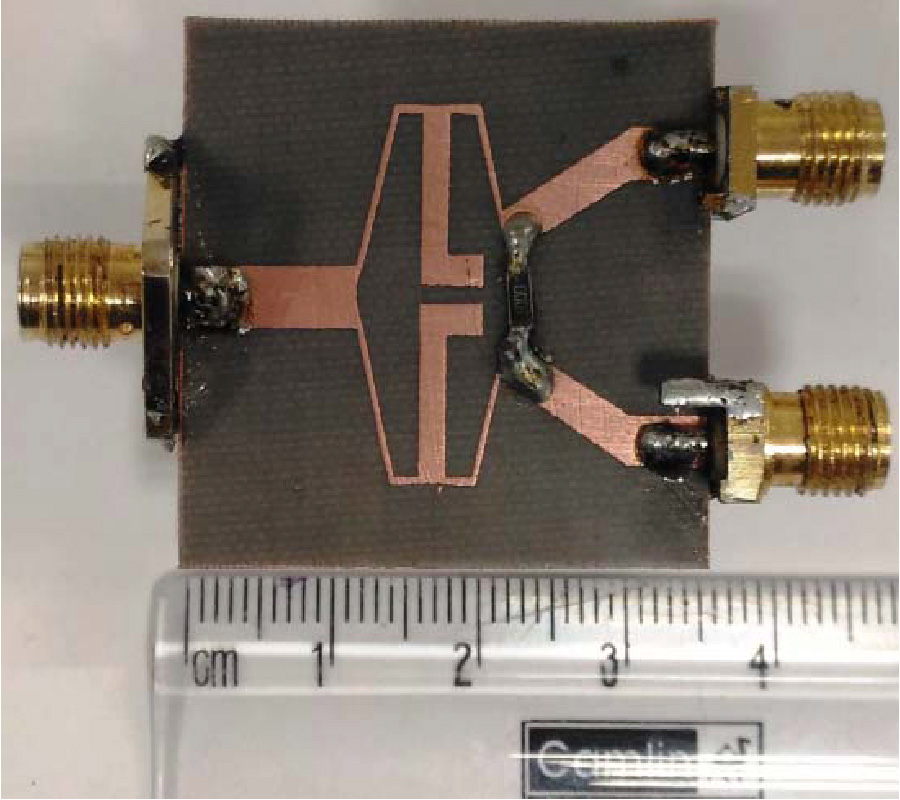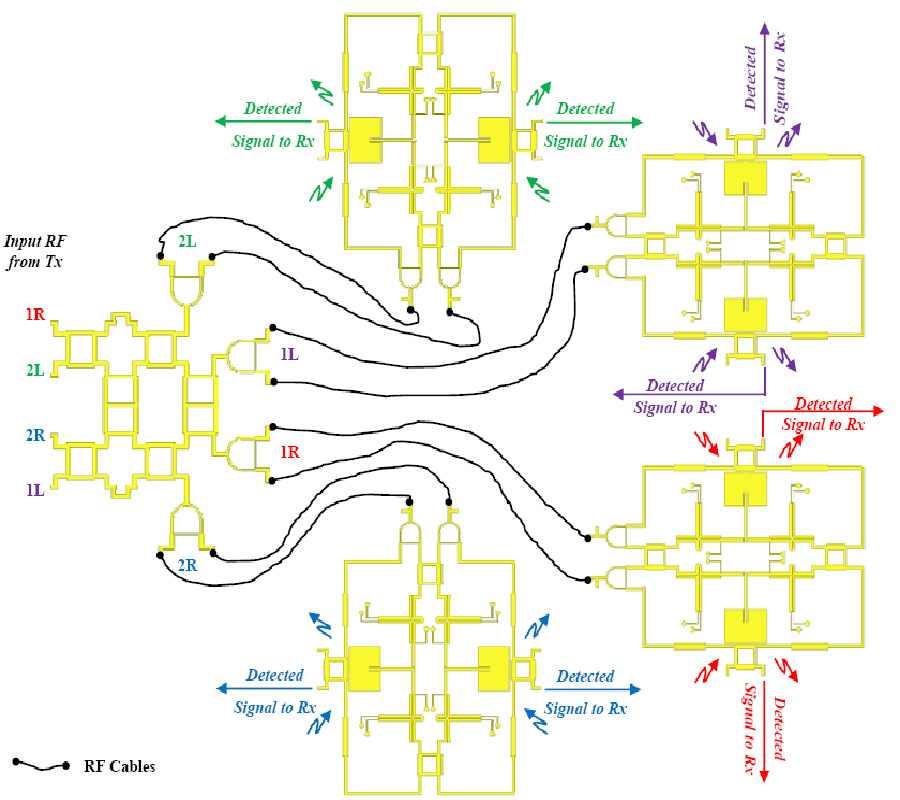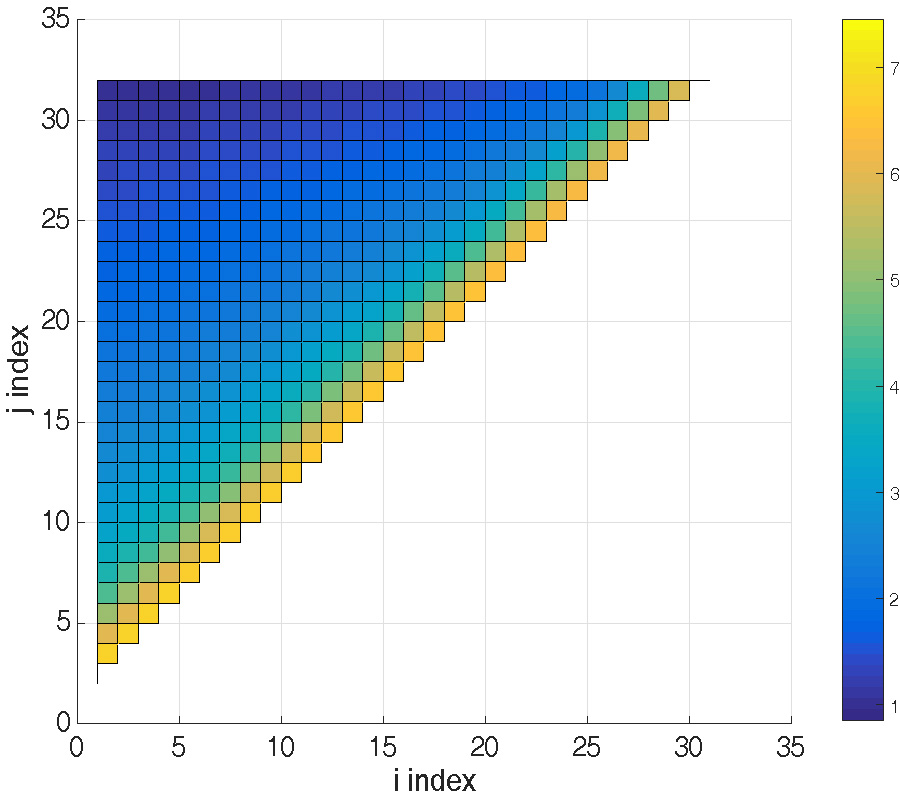Design and Optimization of a Dual-Band Sub-6 GHz
Four Port Mobile Terminal Antenna Performance in the Vicinity of User's Hand
Rizwan Khan
,
Azremi Abdullah Al-Hadi
,
Ping Jack Soh
,
Mohd Tarmizi Ali
,
Samir Salem Al-Bawri
and
Owais
In this paper, the effects of the locations of four dual-band antennas on a mobile terminal chassis are investigated in the vicinity of user's hand. To perform this study, a dual band four-port mobile terminal antenna for 5G is designed for operation in between 3.34 and 3.84 GHz (lower band, LB) and 5.15 and 6.52 GHz (upper band, UB), respectively. Due to the symmetry of the antenna elements (AEs), a right hand standard phantom is placed at a fixed position. Meanwhile, the antenna elements are placed at seven different locations across the chassis, with the best possible locations chosen based on the maximum efficiency in data mode. The influence of the human hand on the antenna performance is assessed based on two aspects: 1) in terms of matching (impedance mismatch (IM) and impedance bandwidth (IB)); and 2) in terms of efficiency (radiation efficiency (RE) and total efficiency (TE)). To validate its performance, the proposed antenna has been fabricated and measured. Results showed good agreement between simulations and measurements. Based on the results, a general design guideline for future 5G antennas operating in the sub-6 GHz bands considering user's hand effects can be outlined. The observed maximum variation for the proposed antenna with user's hand in terms of IM is -8 dB and -5 dB, respectively, and 57% and 37% in TE, respectively.
